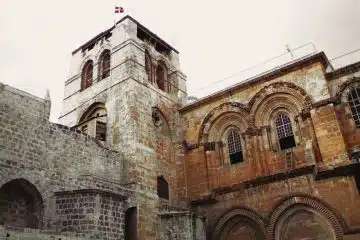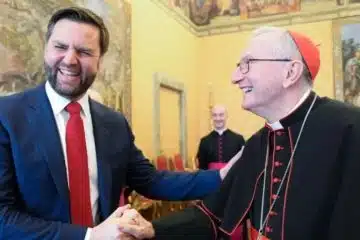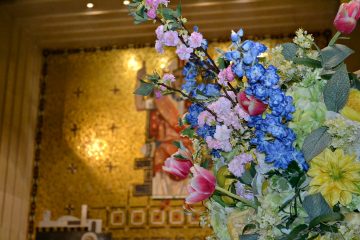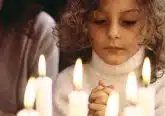What keeps me Catholic? The witness of women reli
October 21, 2011
By Michael Daley
A while back, wanting some gifts for our kids after a week’s vacation away from them, my wife and I wandered into a toy store. Perusing the aisles, my “Catholic” eyes quickly caught a lunch box prominently displayed on a shelf.
On the lid was a Sister in full habit. With requisite ruler in hand, she was standing watch over a young girl who was writing the line, “I am personally responsible for the sins of the world” on the chalkboard.
Getting ready to checkout, for sale at the cash register, was the real show stopper — Nunzilla. When wound up, it spit sparks of fire and waddled like a penguin. I was impressed. Not only have Sisters long been a staple Halloween costume, but they also have entered the elite world of novelty items. No small feat!
Juxtaposed with these examples, however, is another (and I believe truer) image of women religious. This past week my school was having its annual retreat at the motherhouse of the Congregation of Divine Providence in northern Kentucky. You may remember it was made famous by the movie “Rainman” and Dustin Hoffman’s and Tom Cruise’s long walk down its driveway of towering oaks.
I’m not drawn to that natural, yet imposing, image as much as to the community’s cemetery. It is located on a small embankment out back of the motherhouse. Fanning out from a statue of the crucified Christ in the center is row upon row of headstones — plain, sand-colored crosses. All that’s on them is a name and date of death. They are simple, almost understated, testaments to a life of service, most of it unrecognized and little rewarded. The first one dates from May 23, 1892. The most recent one is March 16, 2011. From Sister Mary Joseph to Sister Frances Teresa Saelinger, More than 250 of the Sisters are buried there.
It is, to say the least, an impressive sight — these holy women, this cloud of witnesses, who have preceded us in faith.
Seeing them, one is reminded of the foundational role that women religious have played in both America’s and the church’s history. Arriving in 1727, they found harassment, suspicion, even outright bigotry, in a country then fearful of all things Catholic.
Despite this, these “pioneering” women persevered and established a parochial school system that continues to educate hundreds of thousands of students annually. Likewise, their initial attempts to care for the sick and needy developed into the highly professional and esteemed Catholic health care system of today. In short, at a time when the larger culture, even the church, was saying that a woman’s place was only in the home, women religious were demonstrating that the world was their home.
Summarized briefly: they have been faithful — to their consciences, their vows, their communities, the Catholic Church and the Gospel of Jesus the Christ. Sure, we can all offer a Sister or nun who meets the supposed popular culture caricature, but we also know better. With limited means, yet unbounded in determination and devotion, they “faithed” the American Catholic Church into being.
Though reduced in numbers today, women religious continue to extend their mission and values to the church and world as spiritual directors and chaplains, teachers and writers, social workers and hospital administrators, activists and missionaries, and still others. As one woman religious recently stated, looking at the past and current state of their life, “I come to praise this life, not bury it.”
Count me as another one who is here to praise it. It’s what keeps me Catholic.
Daley is a freelance writer and teacher at St. Xavier High School.













